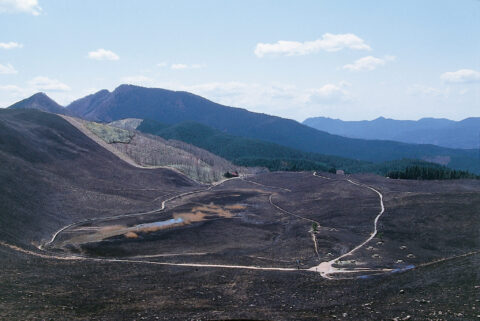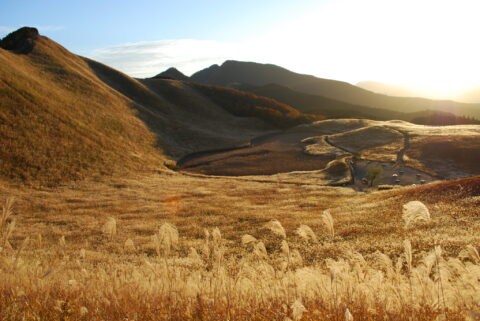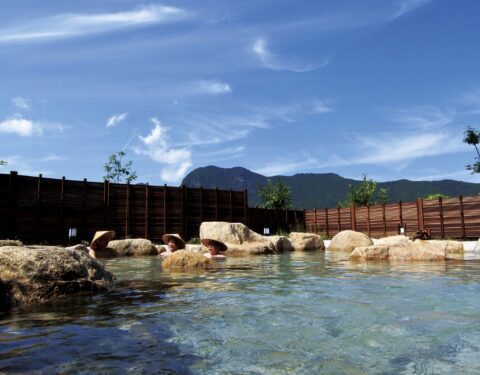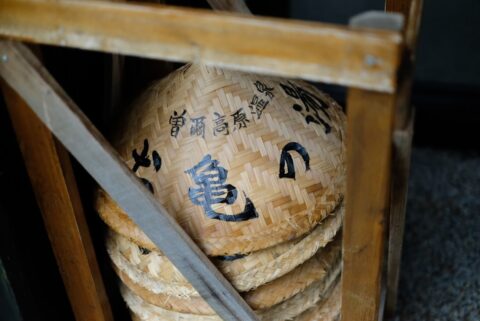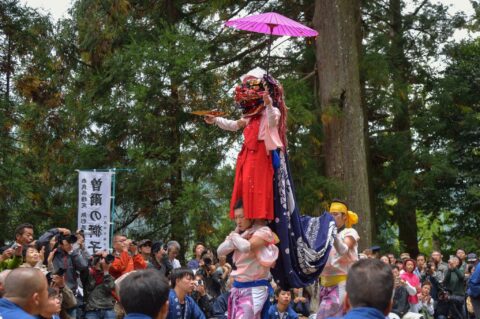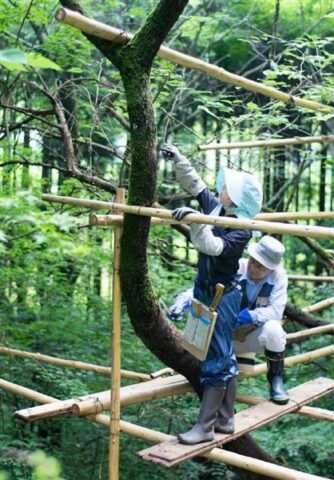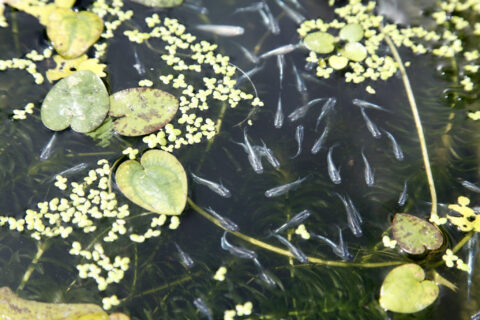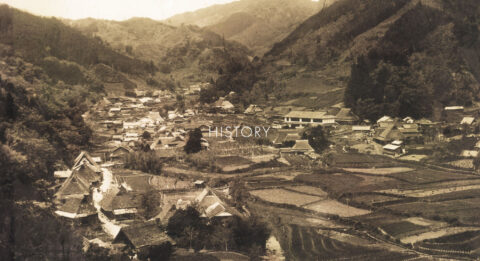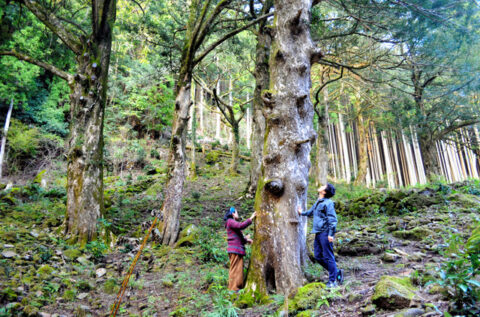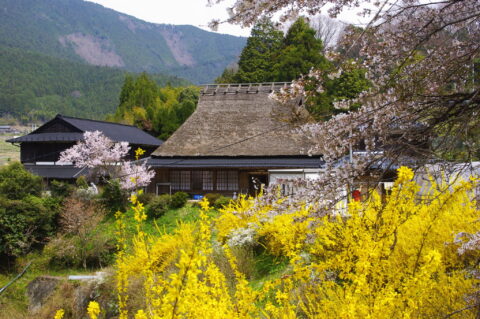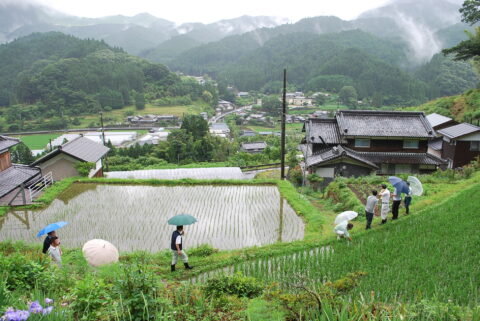
荘厳な自然の息吹を感じ、いくつもの人のぬくもりを感じる曽爾村。郷土への想いを大切に育てる人々と、ここでしか味わえない「暮らすような旅」を。
東京から約4時間、大阪から約1時間50分、奈良から約1時間で訪れる事ができ、奥大和を探求したい旅行者に人気の秘境、曽爾村。清らかな曽爾川の流域に開けるこの村は、奈良県の東北端、三重県境に隣接する小さな農山村です。
村の大半を占める山地は室生火山群といわれ、1500万年前の活動を経て、美しい1000m級の山々と谷間盆地が形成され、その美景は室生赤目青山国定公園に指定されています。
曽爾村は「ぬるべの郷」とよばれ、漆塗り発祥の地であり、神話や伝説など数々の物語が残されています。NPO法人「日本で最も美しい村」連合に承認され、現在も日本の原風景が残る美しい里山です。美しい曽爾川は夏には天然の蛍、秋には奥香落渓の紅葉を楽しむなど、ガイドブックに載っていない人々の暮らしを是非、味わってください。
Soni highlands
These majestic highlands which cover over 40 hectares are nestled at the foot of Mt. Kuroso, one of Japan’s 300 famous mountains and also part of Muro-Akame-Aoyama Quasi-National Park. The highlands see an average of 500~600 thousand visitors a year, a number which increasingly includes more travelers from overseas.
In Summer a lush green carpet of grass stretches as far as the eye can see. In Autumn the long stalks take on a silverly gleam, turning gold in the evening sun. There is a pond which is linked to the “O-kame Legend” where a rare swamp creature is said to live. Historically the highland pampas grasses were cultivated for use as thatch to roof the traditional country houses. While the practice is no longer as widely practiced to this day the villagers maintain the grasslands. At the beginning of Spring the fields are burned to encourage new growth resulting a rare and striking scenery of scorched earth.
O-kame no Yu – Best hot spring in Japan
Opened in 2004, this hot spring was ranked #1 in the Hot Spring Touring Ranking in 2012. It also came top of 202 hot springs for water quality a few years later and frequently tops public polls.
The sodium bicarbonate in the water give it a viscous lotion-like feel which moisturizes as you soak resulting in beautiful skin.
There are two outdoor baths, called the “Stone bathroom” and the “Tree bathroom” which rotate in use for men and women monthly. From there you can enjoy magnificent panoramas of Mt. Yoroi, Mt. Kabuto and the Soni Highlands. At night taking a soak beneath the star-filled sky is also a treat.
Soni Shishi Lion Dance
This is an Autumn festival that’s held every October at an ancient shrine said to be built by Emperor Yuryaku (around 475AD). It is said to have started in 1718 when the people of the Nagano district travelled to Ise and learned the sacred dance and music performed at Ise shrine. Since then the tradition has been passed down orally for over 300 years.
The Soni Shishi Lion Dance is especially renowned for the richness and variety of performances that make up the ceremony. In 1979 it was recognized as intangible folk cultural heritage of Nara. Decorations called ‘suko’ are offered in order to protect the village at the same time of year.
The birthplace of urushi
For centuries Soni Village has been known as the birthplace of natural lacquer known as urushi in Japanese. According to ancient records dating back to the Heian period (795-1185) Prince Ousu established a site of urushi production in Soni and it’s said that from here the traditional craft of lacquer painting developed.
It’s said that long ago urushi trees used to grow wild in a nearby settlement called Shioi. However as the cedar and cypress forestry and agriculture industries grew in the area, urushi tress were cut down. This in turn caused the number of urushi harvesters and painters to decrease leading to the decline of the urushi industry.
In 2017, a group of local volunteers who wanted to revive this deep-rooted tradition banded together to create a place where the local urushi culture and skills can be passed on. Their activities include plating and raising urushi trees and producing urushi crafts. This project has been acknowledged for its contribution to the Sustainable Development Goals (SDGs). At present, the village has an agreement with the local forestry association to have professional foresters take care of the urushi tree plantation.
The Ise Highroad
The Ise Highroad is the route that goes from Osaka and Kyoto through Nara to Ise shrine in Mie. In the middle ages Japan saw a period of relative peace and stability and ordinary people were able to make pilgrimage to Ise shrine. Soni village was often where pilgrims from Osaka would stay on the second night on their journey to Ise shrine. This made Soni the most prosperous village in Oku-Uda and was sometimes called ‘Oku-Uda’s Osaka’ as the sound of puppet theatre accompanied by shamisen could be heard in all around the village. At present Soni village is home to a thriving pisciculture industry focused on raising over 40 different types of killifish. It’s known among killifish fans as the place to go to learn the ins and outs of raising killifish, earning the nickname ‘The killifish highway’.
Daily life
Soni Village is situated in an elevated region prone to rain. The average temperature is 13℃. Year round the mornings and evenings are cool. The farm land is higher up than most farms which means fewer insects and less insect damage to crops. The distinct hot and cold seasons also results in sweet high-altitude crops. The rice that is grown here is recognized for its flavor. This high quality produce is continually developed into new regional products. Additionally, Soni Village has an exceptionally long history as a place of human settlement. Remains found around the village dating back to the stone age are the oldest in the region and Soni is often featured in old folktales and legends. While ancient knowledge is treasured, new resources and skills are also readily adopted to develop special products that are produced and consumed locally, making the best of the old and the new.
We invite you to come experience authentic Japanese country life.

